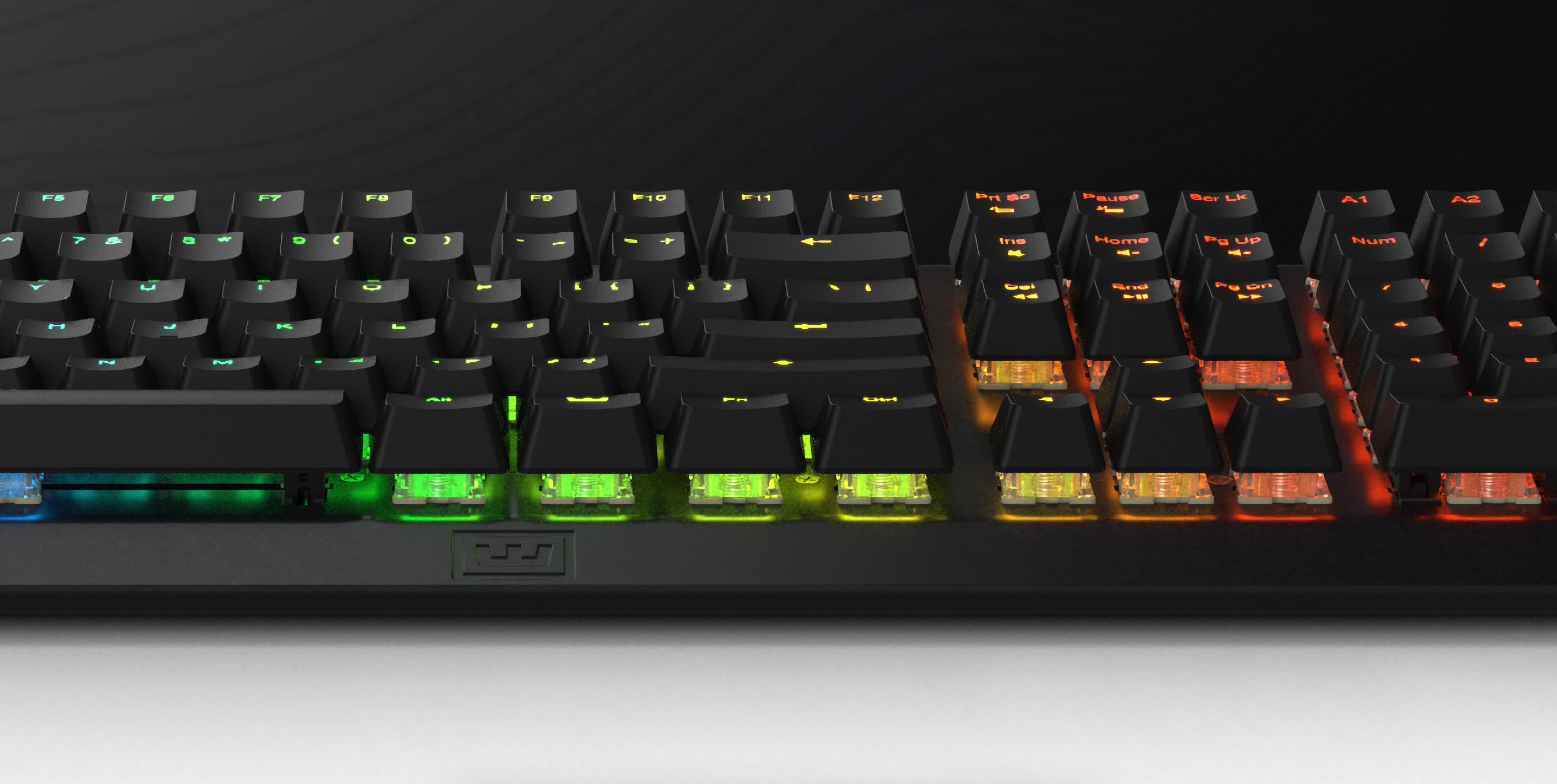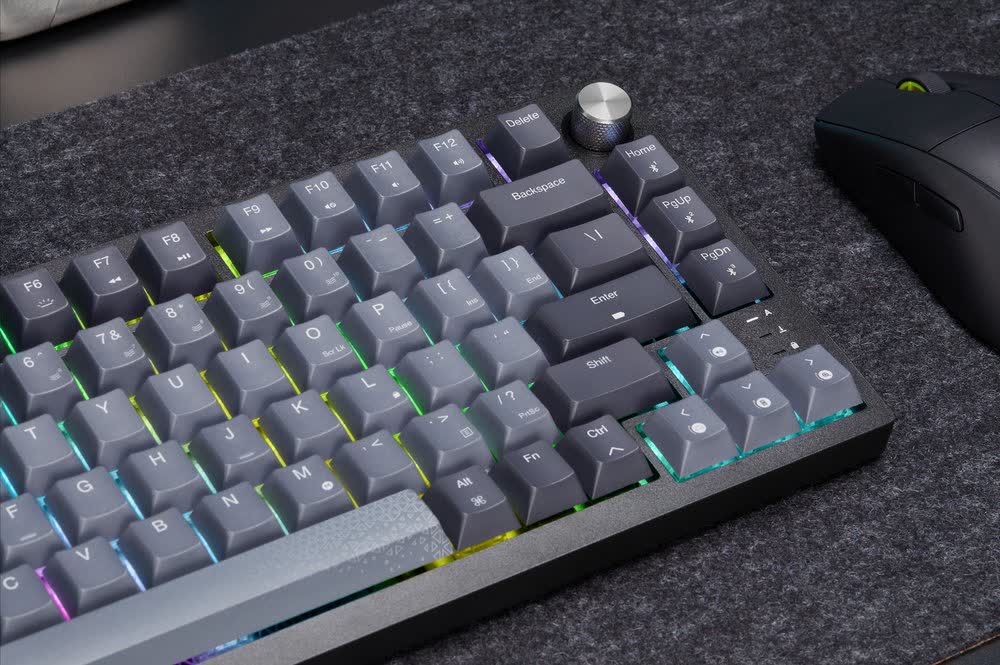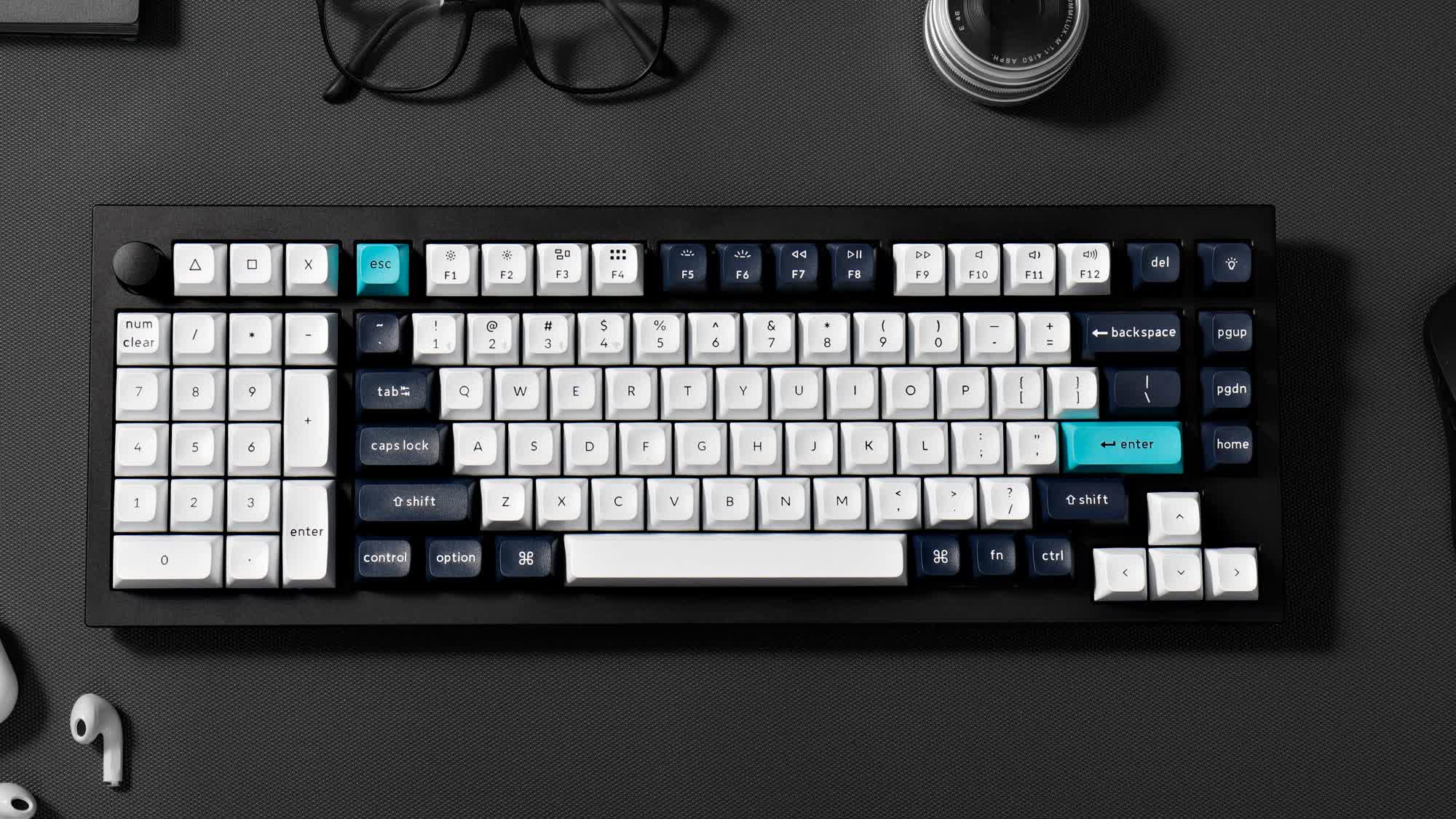What keyboard is the best for you? The answer is about as specific to you as your first name.
If you often type numbers into a spreadsheet, you'll want a full-sized keyboard with a calculator-shaped numpad on the side. Gamers tend to prefer more compact keyboards, referred to as 75% or tenkeyless. One compromise is the 96% format, with almost as many keys as a full keyboard and fewer gaps between them. If you are trying to save space on your desk or in your bag, you may want an even smaller keyboard, called 65% or 60%, without function or even arrow keys.
The most expensive keyboards are mechanical, with each key having its own switch. Traditionally, those switches had three main types. Linear switches, historically associated with the color red, are the quietest and easiest to press. Tactile switches, also called "brown," include a bump to let you feel when you press them. Clicky or "blue" switches incorporate a noisy mechanism to ensure that you (and everyone else in the room) don't miss any keystroke.
In recent years, some mechanical switches rely on the Hall effect for activation by magnetic resistance, or optical sensors that register when light is blocked. Both of these switch types allow the user to adjust the actuation point, or how deeply a key needs to be pressed. They can also be double-clicked without going all the way back up in between. In games, they can also be used for analog movement, with the character moving faster as they are pressed more deeply.
In cheaper keyboards, all keys are attached to the same rubber membrane with a conductive matrix underneath. Membranes are quiet and flexible, allowing for curved ergonomic keyboards, but the matrix can't always identify simultaneous key presses, making such keyboards less ideal for gaming. Membranes are also not very tactile, but laptops and other low-profile keyboards use scissor-like keys that create a stronger sense of hitting the bottom.
As with mice, the question of whether a keyboard is wireless mostly matters if it uses Bluetooth, which limits its polling rate to 125Hz, but allows it to connect to several devices simultaneously. Other factors that can influence your choice are the weight of the case, the build of the keycaps, memory profiles, and of course, RGB backlight.
For this guide, we chose some of the most popular keyboards and found out what they are good for. If you don't like some of their features, this will help you narrow down your search for a keyboard that better suits your needs. We're not calling this a "best keyboards" guide, as we haven't tested every new model on the market. However, we've drawn on years of experience testing dozens of keyboards and have gathered insights across various brands and switch types.
Great for Typing
Keychron Q1 HE | Keychron Q12 Max | Logitech MX Mechanical

Utilizing the Hall effect, the Keychron Q1 HE can set the actuation point of its switches anywhere between 0.2mm and 3.8mm. The fully assembled version comes with lubricated switches rated for 150 million clicks, but you can also buy the keyboard without switches, and lighter or heavier switches separately.
The keycaps are made of high-quality PBT plastic, so they won't get that infamous greasy look after you've used them for a while. The case is made of aluminum, so it won't slide on the desk as you type, and also includes acoustic foam. The Keychron is only available in the 75% form factor.
The keyboard offers RGB backlight, but the keycaps themselves are opaque, so it's not ideal for using in the dark. You can use Keychron's web app to save up to three setting profiles to the keyboard's on-board storage, without the need to install it on your computer.
The Q1 HE supports Windows and macOS, and can be connected either via USB or wirelessly, either with a 2.4GHz dongle or Bluetooth (90Hz). In wireless mode, its battery is rated for up to 100 hours.
Keychron Q12 Max
The right-side numpad is a relic from before the mouse era. It forces a distance between your two hands when playing games, and isn't convenient to use alongside the mouse.
Keychron offers several "southpaw" boards with the numpad on the left, and the best of which is the Q12 Max, which offers everything the Q1 HE does except the magnetic switches for the same $219. It comes with red, brown or "banana" switches, which are similar to brown, but with the tactile bump higher within the key. A bigger keyboard also means a bigger battery, or up to 180 hours between charges.
If you are left-handed (we also have mice for you) or are just used to a right-side numpad, you can get the Keychron Q6 Max for the same price.
Logitech MX Mechanical
If you don't need an all-metal case, you can also find more affordable keyboards. For example, the Logitech MX Mechanical is selling for about $150 for the full-size version and $140 for the gapless 75% Mini version, with red, brown or blue switches.
The keyboard uses low-profile keycaps, which can improve typing speed but hurt accuracy. The white backlight can be automatically activated thanks to hand-proximity and ambient light sensors. The top plate is made of aluminum for structural integrity, but the rest of the case is plastic, so the keyboard weights about half as much as the Keychron.

The USB cable is only used for charging. The keyboard's effective polling rate is 125Hz with either Bluetooth or the included USB dongle. On the other hand, its rated battery life is 15 days with backlight, or 10 months (!) without it. If you have a mouse that supports Logitech Flow, you can use it for switching between devices by moving the mouse.
If you want to save more (in price and keycap height), the Logitech MX Keys S is basically the same keyboard, but with a membrane and scissor keys, for $110.
Wireless mechanical keyboards aren't cheap unless they compromise material quality, but if you don't mind that, you can get the full-size Keychron V6 Max for $99. On the other hand, if you don't need a wireless board, the Logitech K845 can be had for just $60 with an aluminum top plate.
Great Keyboards for Gamers
Razer Huntsman V3 Pro | Wooting Two HE | Corsair K65 Plus

Using analog optical switches, the Razer Huntsman V3 Pro allows an actuation point anywhere between 0.1mm and 4.0mm for its buttons. the keycaps are covered in PBT plastic, except the translucent legends, which are harder to see without the RGB backlight. The keyboard doesn't offer wireless connectivity, as it would need a huge battery.
The keyboard has three versions: full size, tenkeyless, and 60%. If you are considering the 60% version, you should know that the older Huntsman Mini Analog is available for half the price, with the main drawback being the press detection starting at 1.5mm.
The two larger versions include an LED display for your settings, and come with a magnetic writs rest. The top of the case is made of brushed aluminum, but the rest of it is plastic. To change settings, you'll need to download the Razer Synapse app. The Huntsman V3 Pro can store up to six setting profiles.
Wooting Two HE
The Wooting Two HE is a magnetic keyboard that performs similarly to the Huntsman V3 Pro. Thanks to 8MB of onboard storage, no software needs to run in the background when you use the keyboard with your selected settings. Because it's a small company, it can take a few weeks for the keyboard to ship, but if you are patient, it's worth the $195.

The SteelSeries Apex Pro is a similarly performing keyboard with an OLED display and a magnetic wrist rest, for $168. But if you don't need it urgently, we'd prefer the Wooting option thanks to its lightweight web app and more refined RGB backlight.
Asus ROG Strix Scope II 96 Wireless
Utilizing the 96% form factor, the conveniently named Asus ROG Strix Scope II 96 Wireless is the perfect non-analog gaming keyboard. It's available with either the quiet NX Snow or noisy NX Storm switches for about $160. The switches come lubricated, and you can replace them without taking the keyboard apart. The case is all plastic, but it includes sound dampening foam.

The keyboard can connect with either a cable, a USB dongle or Bluetooth. The Armory Crate app will let you save six memory profiles as well. The only problem is, it doesn't officially support macOS.
Corsair K65 Plus
The Corsair K65 Plus ($160) is marketed as a gaming keyboard, but it's actually a very good keyboard that can also be used for gaming. Despite its name, the keyboard uses the 75% form factor. The keycaps are PBT, so they are less suitable for playing in the dark, and more for playing with the RGB backlight off – for up to 266 hours on battery.
You can save up to four setting profiles with the iCue app. With a physical button you can switch between Windows and macOS/iPadOS modes.

If you don't need PBT keycaps or wireless functionality, you can get more for less in other areas. The full-size Corsair K70 Core is often available for $80, with translucent legends, an aluminum top plate, and a magnetic wrist rest.
The cheapest wireless keyboard we can recommend is the gapless 75% Royal Kludge RK84 for $60. The Keychron C3 Pro is a backlit mechanical keyboard, and for that alone it's worth $37 with red-only backlight, or $47 with RGB.
Great for Travel
Logitech MX Keys Mini

On a desk, the Logitech MX Keys Mini looks like nothing special – it's a compact version of the last-gen MX Keys. The difference appears when you put it in your bag and realize how much space you have left.
The Mini includes features you wouldn't find on a keyboard made specifically for travel, like automatic backlight and an aluminum top plate. However, its battery is good for 10 days with backlight, and five months without it. The keyboard also supports Logitech Flow with a compatible mouse.
If you already have a desktop keyboard and are looking for something just for travel, the $40 Logitech Pebble Keys 2 looks similar at first sight, but it's all plastic, has no backlight and doesn't support Logitech Flow. Its two AAA batteries will last for three years.
Mechanical keyboards in general aren't designed for travel, but if you want to get a low-profile wireless board and remain with enough money for a full-height home keyboard, your best options are the NuPhy Air75 V2 ($102) and Keychron K3 Max ($94). If you also want a numpad, check out the NuPhy Air96 V2 ($110) and Keychron K13 Max ($94).
Great for Your Health
Logitech Wave Keys | Keychron V10 Max

Reaching toward the middle of a flat keyboard forces your wrist into an unnatural position. The Logitech Wave Keys uses its curved shape to counter this problem, and also includes a wrist cushion with memory foam. It's not suitable for one-handed typing, but that's not a recommended practice anyway.
The Wave is a 96% keyboard with a gapless design. It doesn't have a cable connector and it's limited to Bluetooth speeds even with the included USB dongle, so it's not for competitive gaming. On the other hand, it supports Logitech Flow and can get three years of use out of two AAA batteries.
Logitech offers the Ergo K860 as an upgrade option with scissor keys, but at $130 it's too expensive for what it offers unless you like its more spacious design. At this price, backlit keys and a rechargeable battery are expected.
Keychron V10 Max
Several "ergonomic" mechanical keyboards are available, but most of them look like a standard keyboard broken in half. The curved Alice layout looks a bit more promising and not too hard to get used to. Since we are comparing it to affordable membrane keyboards, we didn't choose anything from Keychron's expensive Q series, but the next-best thing.
The V10 Max is available with red, brown, or "banana" switches. It can connect with a USB cable, a 2.4Ghz dongle or Bluetooth, and rated for up to 225 hours on battery with the RGB backlight off. The keycaps are made of opaque PBT. The case is made of plastic, but that's what you can expect for $109.



